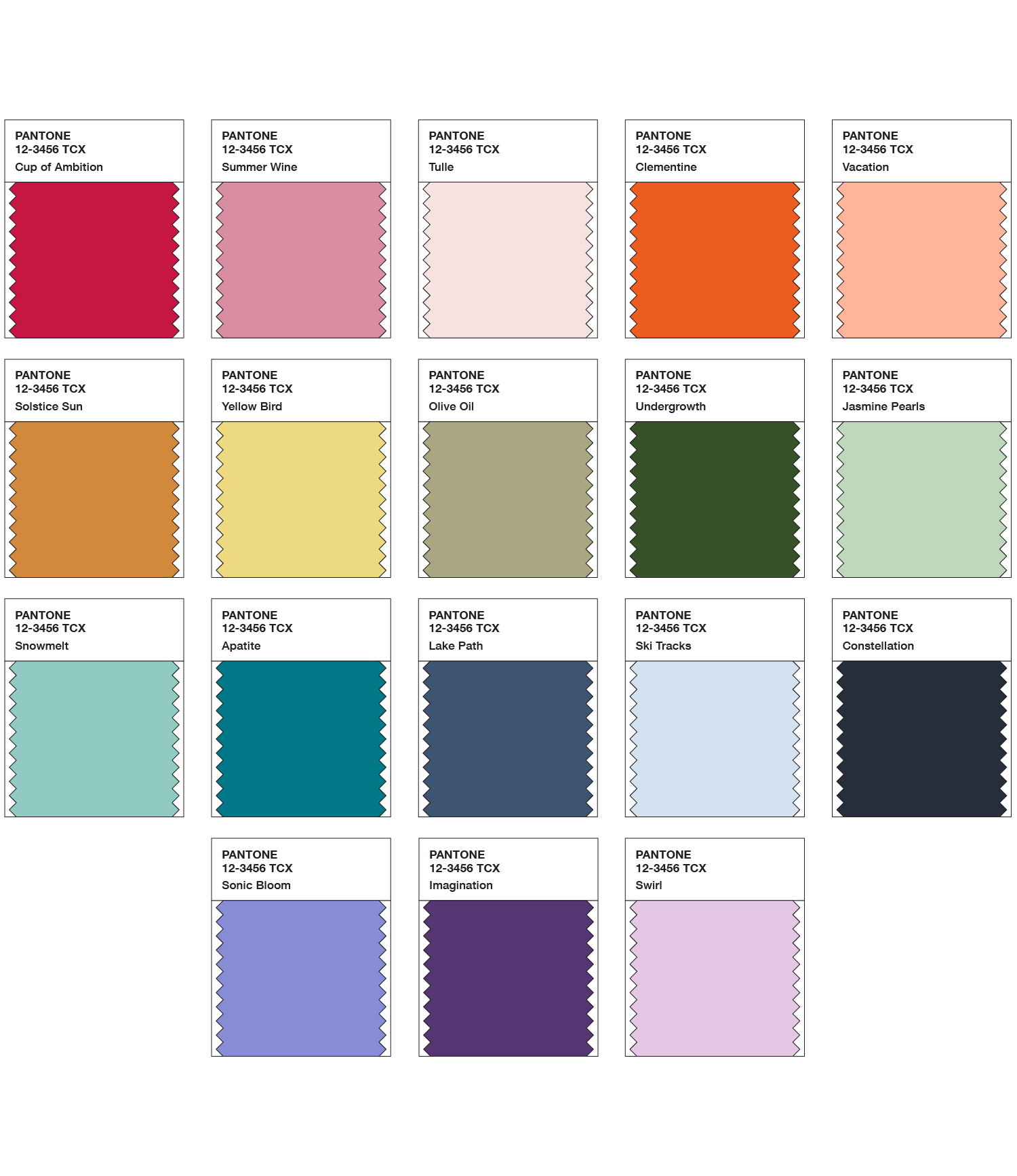COLOR PROCESSStep one is research.
To begin, I explore the perspectives and content of artists, athletes, makers, travelers, designers in various industries, and people from diverse backgrounds. I look for the unexpected and the new in order to understand organically emerging patterns of change in both global and regional communities. Most importantly, I approach every source with curiosity and an open mind, guided by the process instead of a projected outcome.
Then, I look for color in the world around me to find the visionary in the everyday. Art exhibitions, city walks, people watching, heading out into nature—I pay attention to everything without an agenda. I notice what colors organically emerge, and collect as many reference images as possible.
Seeking to contextualize color within human behaviors, I start to organize all of my research into trends organized by product and audience. Using my collected imagery, I create a mood document that anchors and guides each color palette. Notes on macro social trends and consumer profiles accompany the color information within this mood document, providing a lexicon of synthesized trend information.

Step two is pulling color families.
At this point, there are no wrong colors. I cast a wide net by pulling all the colors identified through visual information collected in my own research. As part of team or company methodology, I reference seasonally forecasted colors specified in trend resources. I also pull big stacks of color families, because I know that—for example—in order to find the right peach-pink, I need to look at nearly every peach-pink swatch available.
Step three is experimentation.
Each color palette has an alchemy that emerges through experimentation. I play with combinations, add or subtract swatches, ask for feedback, and often walk away entirely from a palette (for a few hours or a full day) in order to return with a fresh perspective. These stages of progress whittle away at the color families until a clearer story begins to appear.
Step four is distillation
and final review.
This is when the magic all comes together. After many iterations and countless edits, the palette is ready for review with the creative director and other relevant parties. Final revisions are made after receiving their feedback.



